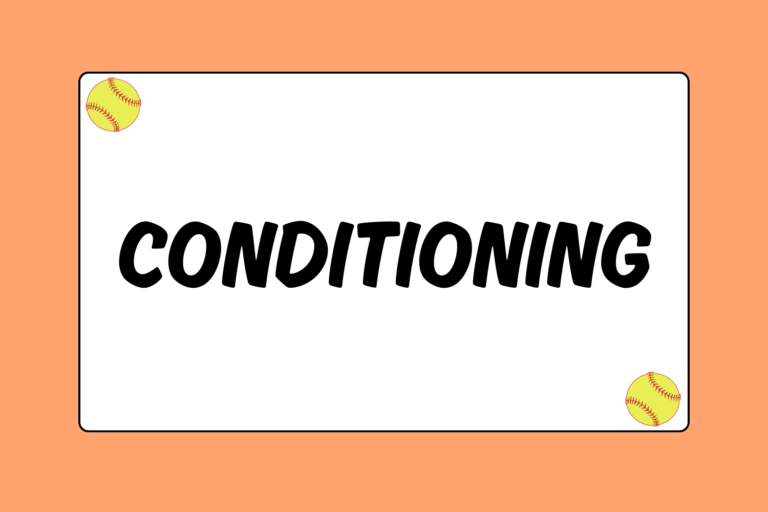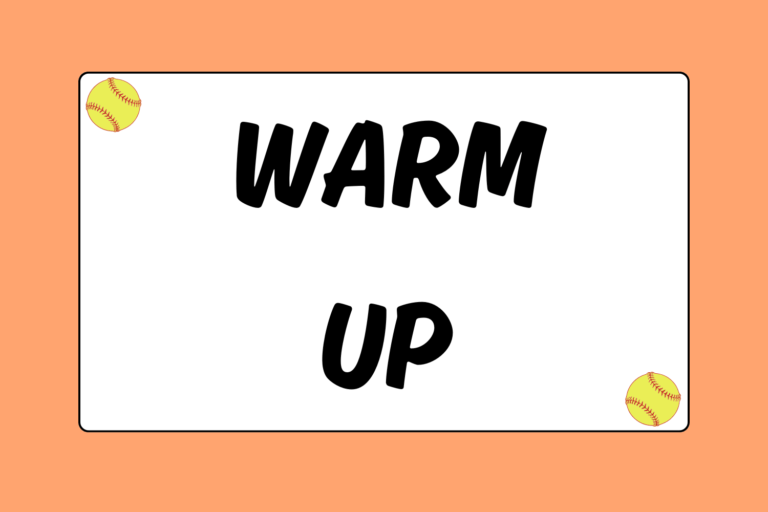First base is a prime position in softball because it’s the base where the large majority of plays are made. A first baseman needs to be able to catch every throw — high, low, and wide. Equipped with a first baseman’s mitt and an abundance of confidence, she must be daunting. This guide offers the basic set of skills that any first baseman needs to become an imminent threat on the field.
Getting into Position
Where you stand along the baseline is determined by your speed. As a first baseman, you need to set up where you’re able to crash a bunt or slow roller, but still be able to get back in time for a pick-off. You’ll also need to have a feel for your position and know where you are relative to the bag at all times. A good first baseman can get back to her bag without even looking to see where it is.
Getting Back to First
On every ground ball or base hit, the play will be at first base. You need to be able to get back to your bag quickly. The fastest way for you to get back is to drop step and sprint back towards the bag without taking your eyes off the play. This means that you should never turn your back on the infield; keep your eyes on the ball and the runners.
By staying focused on the infield, you’ll be able to see possible double play situations — and it doesn’t get much better than executing a double play. So, if you have some free time, try to find a local field. Put a bag down at first and do some dry runs getting back to the bag. With enough practice, you’ll know exactly where you are relative to the bag without even looking.
Receiving a Throw
When expecting a throw, the heel of your throwing-side foot needs to be on or firmly against the inside corner of the bag while your body faces the thrower. When anticipating a throw, you should never be stretched out. Do not stretch for the ball until the thrower has released it, and you can see where the throw is going.
If you stretch prior to catching the ball, your mobility will be virtually nonexistent. You’ll have already stretched as far as you can and your feet will be planted — you won’t be able to recover if there’s a wild throw.
Don’t Stay Married to the Bag!
You cannot stay glued to your bag. Wild throws will lead you away from the bag so be prepared to leave first base! If the ball is only slightly off-target and you are too stubborn to take your foot off the bag, you’ll lose some easy outs at first.
Don’t be lazy! First basemen need to be agile and aggressive. If a throw is made to first base, you need to catch it one way or another, on or off the bag. Don’t give up on a play; if a throw pulls you off the base, you might still have time to tag the runner.
Fielding Bunts
Bunts play a major part in your duties at first. First basemen should generally cover all bunts to the right side of the infield. Like the third baseman, the first baseman should try to alleviate some of the pitcher’s pressure and keep her from needing to field a bunt. Unless it’s bunted right at the pitcher, the pitcher should not field a bunt — call her off!
When you see a batter square around to bunt, charge it. Be aware, though, that when you come forward you’re decreasing your own reaction time against any hit.
Try to squeeze the baseline to make up for lost reaction time on hits down the line. Your second baseman can cover hard hits to your right, but you are the first line of defense for hits down the line before they reach the outfield.
Hot Tip: Field Bunts Faster!
A nice trick to fielding slow-rolling bunts is to use the outside of your glove’s pocket instead of using the pocket itself. When you get to the bunt, stay low. Position yourself so the ball lies between the outside of your glove’s pocket and your throwing hand. Scoop the ball up against your glove and get ready to throw. This makes the glove-to-hand transfer instantaneous for a faster play.
Finishing the Play
You can do one of two things to finish the play after a bunt, both depending upon the runner and situation:
- If the runner is slow and the bunt is only an attempt to advance a runner: Field the ball, secure it with two hands, and tag the runner on the base path. Turn your body towards the lead runner and be prepared for the double play at the next base.
- If the runner is quick and the bunt is an attempt at a base hit: Field the ball, stay low, pivot to your glove-side, and finish the play at first. You may need to make a quick, side-armed throw to the second baseman covering first.
Whatever the circumstance, the first baseman needs to be aware of the where runners are at all times. If you can make a double play, do it!
Pickoffs at First Base
First base pickoffs will be common since first base is often occupied by base runners. Make sure to communicate with the second baseman regarding who will cover the bag. In general, if you are playing up for a bunt, the second baseman will cover the bag. For every other situation, you’ll cover your own bag.
A pickoff is another situation when you’ll want to know where you are relative to the bag. Do a quick drop step and head back to your base. Never turn your back to the infield! Straddle the base with your back to the baseline and your eyes on the runner — you’ll be right where the runner needs to go. Get in a low athletic position and give your catcher an open target. Once you receive the ball, you have two options:
- Drop your glove-side knee, block the bag, and put a sweeping tag on the runner.
- Stay low and put a sweeping tag on the runner without blocking the bag.
If you block the bag, make sure you do so after you’ve caught the ball. Blocking the bag without possession of the ball is interference and the runner will automatically be safe.
Foul Balls
Foul balls are also the first baseman’s territory. Any foul ball to the right side of the field is fair game. If there is a foul pop-up to the catcher, the corner infielders have priority on the ball since they have a better view (and a better jump).
You should only miss a foul ball if the fence stops you or a diving attempt isn’t good enough. If you have a chance to catch a foul ball, go for it. Foul balls are easy outs and a sure way to alleviate pressure from the pitcher.
Strong Arm
Besides having a golden glove, you need to be able to throw around the diamond. Whether it’s making the double plays to second or third or being the cut-off for the outfield, your throw needs to be strong and accurate. Nothing is better to witness than seeing a clean play to first, followed by a strong throw to second or third to drive home a double play.
Own it!
First base is an action-filled position; all of the runners and many of the plays will be coming right to you. You need to be able to catch every throw, not just the good ones. Own your spot! Jump and stretch for overhead throws, and drop down on a knee or use your body to block the low ones. You’re the first baseman, don’t let a batter occupy your base!





